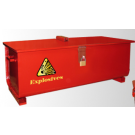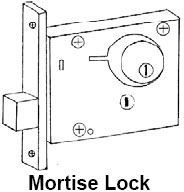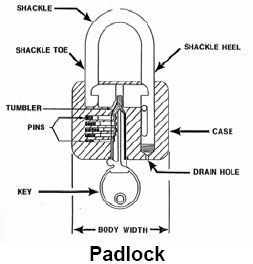Department of Justice: Bureau of Alcohol, Tobacco, Firearms, and Explosives:
2017 Annual List of Explosive Materials
Source: Federal Register, Vol. 82 No. 248 December 28, 2017 https://www.gpo.gov
In accordance with Federal law, the Department of Justice must publish and revise at least annually in the Federal Register a list of explosives determined to be explosive materials.
This list covers explosives, blasting agents and detonators, all of which are defined as “explosive materials.” Each material listed, as well as all mixtures containing any of these materials, constitute ‘‘explosive materials’’ under 18 U.S.C. 841(c). This list contains the 2017 Annual List of Explosive Materials, which remains unchanged from the 2016 Annual List of Explosives.
Note: While the list is comprehensive, it is not all-inclusive. The fact that an explosive material is not on this list doesn’t mean that it is not within the coverage of the law if it otherwise meets the statutory definition in 18 U.S.C. 841.
Materials constituting blasting agents are marked in italics.
Explosive materials are listed alphabetically and followed by their common names (where applicable), chemical names, and/or synonyms in brackets.
A
Acetylides of heavy metals.
Aluminum containing polymeric propellant.
Aluminum ophorite explosive.
Amatex.
Amatol.
Ammonal.
Ammonium nitrate explosive mixtures (cap sensitive).
Ammonium nitrate explosive mixtures (non-cap sensitive).
Ammonium perchlorate having particle size less than 15 microns.
Ammonium perchlorate explosive mixtures (excluding ammonium perchlorate composite propellant (APCP)).
Ammonium picrate [picrate of ammonia, Explosive D].
Ammonium salt lattice with isomorphously substituted inorganic salts.
NFO [ammonium nitrate-fuel oil]. Aromatic nitro-compound explosive mixtures.
Azide explosives.
B
Baranol.
Baratol.
BEAF [1, 2-bis (2, 2-difluoro-2- nitroacetoxyethane)].
Black powder.
Black powder based explosive mixtures.
Black powder substitutes.
Blasting agents, nitro-carbo-nitrates, including non-cap sensitive slurry and water gel explosives.
Blasting caps.
Blasting gelatin.
Blasting powder.
BTNEC [bis (trinitroethyl) carbonate].
BTNEN [bis (trinitroethyl) nitramine].
BTTN [1,2,4 butanetriol trinitrate].
Bulk salutes.
Butyl tetryl.
C
Calcium nitrate explosive mixture.
Cellulose hexanitrate explosive mixture.
Chlorate explosive mixtures.
Composition A and variations.
Composition B and variations.
Composition C and variations.
Copper acetylide.
Cyanuric triazide.
Cyclonite [RDX].
Cyclotetramethylenetetranitramine [HMX].
Cyclotol.
Cyclotrimethylenetrinitramine [RDX].
D
DATB [diaminotrinitrobenzene].
DDNP [diazodinitrophenol].
DEGDN [diethyleneglycol dinitrate].
Detonating cord.
Detonators.
Dimethylol dimethyl methane dinitrate composition.
Dinitroethyleneurea.
Dinitroglycerine [glycerol dinitrate].
Dinitrophenol.
Dinitrophenolates.
Dinitrophenyl hydrazine.
Dinitroresorcinol.
Dinitrotoluene-sodium nitrate explosive mixtures.
DIPAM [dipicramide; diaminohexanitrobiphenyl].
Dipicryl sulfone.
Dipicrylamine.
Display fireworks.
DNPA [2,2-dinitropropyl acrylate].
DNPD [dinitropentano nitrile].
Dynamite.
E
EDDN [ethylene diamine dinitrate].
EDNA [ethylenedinitramine].
Ednatol.
EDNP [ethyl 4,4-dinitropentanoate].
EGDN [ethylene glycol dinitrate].
Erythritol tetranitrate explosives.
Esters of nitro-substituted alcohols.
Ethyl-tetryl.
Explosive conitrates.
Explosive gelatins.
Explosive liquids.
Explosive mixtures containing oxygen-releasing inorganic salts and hydrocarbons.
Explosive mixtures containing oxygen-releasing inorganic salts and nitro bodies.
Explosive mixtures containing oxygen-releasing inorganic salts and water insoluble fuels.
Explosive mixtures containing oxygen-releasing inorganic salts and water soluble fuels.
Explosive mixtures containing sensitized nitromethane.
Explosive mixtures containing tetranitromethane (nitroform).
Explosive nitro compounds of aromatic hydrocarbons.
Explosive organic nitrate mixtures.
Explosive powders.
F
Flash powder.
Fulminate of mercury.
Fulminate of silver.
Fulminating gold.
Fulminating mercury.
Fulminating platinum.
Fulminating silver.
G
Gelatinized nitrocellulose.
Gem-dinitro aliphatic explosive mixtures.
Guanyl nitrosamino guanyl tetrazene.
Guanyl nitrosamino guanylidene hydrazine.
Guncotton.
H
Heavy metal azides.
Hexanite.
Hexanitrodiphenylamine.
Hexanitrostilbene.
Hexogen [RDX].
Hexogene or octogene and a nitrated Nmethylaniline.
Hexolites.
HMTD [hexamethylenetriperoxidediamine].
HMX [cyclo-1,3,5,7-tetramethylene 2,4,6,8- tetranitramine; Octogen].
Hydrazinium nitrate/hydrazine/aluminum explosive system.
Hydrazoic acid.
I
Igniter cord.
Igniters.
Initiating tube systems.
K
KDNBF [potassium dinitrobenzo-furoxane].
L
Lead azide.
Lead mannite.
Lead mononitroresorcinate.
Lead picrate.
Lead salts, explosive.
Lead styphnate [styphnate of lead, lead trinitroresorcinate].
Liquid nitrated polyol and trimethylolethane.
Liquid oxygen explosives.
M
Magnesium ophorite explosives.
Mannitol hexanitrate.
MDNP [methyl 4,4-dinitropentanoate].
MEAN [monoethanolamine nitrate].
Mercuric fulminate.
Mercury oxalate.
Mercury tartrate.
Metriol trinitrate.
Minol-2 [40% TNT, 40% ammonium nitrate, 20% aluminum].
MMAN [monomethylamine nitrate]; methylamine nitrate.
Mononitrotoluene-nitroglycerin mixture.
Monopropellants.
N
NIBTN [nitroisobutametriol trinitrate].
Nitrate explosive mixtures.
Nitrate sensitized with gelled nitroparaffin.
Nitrated carbohydrate explosive.
Nitrated glucoside explosive.
Nitrated polyhydric alcohol explosives.
Nitric acid and a nitro aromatic compound explosive.
Nitric acid and carboxylic fuel explosive.
Nitric acid explosive mixtures.
Nitro aromatic explosive mixtures.
Nitro compounds of furane explosive mixtures.
Nitrocellulose explosive.
Nitroderivative of urea explosive mixture.
Nitrogelatin explosive.
Nitrogen trichloride.
Nitrogen tri-iodide.
Nitroglycerine [NG, RNG, nitro, glyceryl trinitrate, trinitroglycerine].
Nitroglycide.
Nitroglycol [ethylene glycol dinitrate, EGDN].
Nitroguanidine explosives.
Nitronium perchlorate propellant mixtures.
Nitroparaffins Explosive Grade and ammonium nitrate mixtures.
Nitrostarch.
Nitro-substituted carboxylic acids.
Nitrourea.
O
Octogen [HMX].
Octol [75 percent HMX, 25 percent TNT].
Organic amine nitrates.
Organic nitramines.
P
PBX [plastic bonded explosives].
Pellet powder.
Penthrinite composition.
Pentolite.
Perchlorate explosive mixtures.
Peroxide based explosive mixtures.
PETN [nitropentaerythrite, pentaerythrite tetranitrate, pentaerythritol tetranitrate].
Picramic acid and its salts.
Picramide.
Picrate explosives.
Picrate of potassium explosive mixtures.
Picratol.
Picric acid (manufactured as an explosive).
Picryl chloride.
Picryl fluoride.
PLX [95% nitromethane, 5% ethylenediamine].
Polynitro aliphatic compounds.
Polyolpolynitrate-nitrocellulose explosive gels.
Potassium chlorate and lead sulfocyanate explosive.
Potassium nitrate explosive mixtures.
Potassium nitroaminotetrazole.
Pyrotechnic compositions.
Pyrotechnic fuses.
PYX [2,6-bis(picrylamino)] 3,5- dinitropyridine.
R
RDX [cyclonite, hexogen, T4, cyclo-1,3,5,- trimethylene-2,4,6,-trinitramine; hexahydro-1,3,5-trinitro-S-triazine].
S
Safety fuse.
Salts of organic amino sulfonic acid explosive mixture.
Salutes (bulk).
Silver acetylide.
Silver azide.
Silver fulminate.
Silver oxalate explosive mixtures.
Silver styphnate.
Silver tartrate explosive mixtures.
Silver tetrazene.
Slurried explosive mixtures of water, inorganic oxidizing salt, gelling agent, fuel, and sensitizer (cap sensitive).
Smokeless powder.
Sodatol.
Sodium amatol.
Sodium azide explosive mixture.
Sodium dinitro-ortho-cresolate.
Sodium nitrate explosive mixtures.
Sodium nitrate-potassium nitrate explosive mixture.
Sodium picramate.
Squibs.
Styphnic acid explosives.
T
Tacot [tetranitro-2,3,5,6-dibenzo-1,3a,4,6a tetrazapentalene].
TATB [triaminotrinitrobenzene].
TATP [triacetonetriperoxide].
TEGDN [triethylene glycol dinitrate].
Tetranitrocarbazole.
Tetrazene [tetracene, tetrazine, 1(5- tetrazolyl)-4-guanyl tetrazene hydrate].
Tetrazole explosives.
Tetryl [2,4,6 tetranitro-N-methylaniline].
Tetrytol.
Thickened inorganic oxidizer salt slurried explosive mixture.
TMETN [trimethylolethane trinitrate].
TNEF [trinitroethyl formal].
TNEOC [trinitroethylorthocarbonate].
TNEOF [trinitroethylorthoformate].
TNT [trinitrotoluene, trotyl, trilite, triton].
Torpex.
Tridite.
Trimethylol ethyl methane trinitrate composition.
Trimethylolthane trinitrate-nitrocellulose.
Trimonite.
Trinitroanisole.
Trinitrobenzene.
Trinitrobenzoic acid.
Trinitrocresol.
Trinitro-meta-cresol.
Trinitronaphthalene.
Trinitrophenetol.
Trinitrophloroglucinol.
Trinitroresorcinol.
Tritonal.
U
Urea nitrate.
W
Water-bearing explosives having salts of oxidizing acids and nitrogen bases, sulfates, or sulfamates (cap sensitive).
Water-in-oil emulsion explosive compositions.
X
Xanthomonas hydrophilic colloid explosive mixture.





